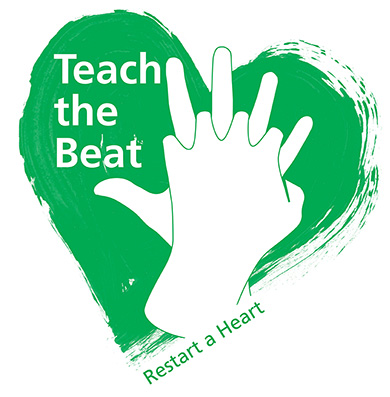London Ambulance Service and businesses partner up to save lives
A campaign aims to see thousands of Londoners learn lifesaving skills, as the country’s busiest ambulance service trains volunteers in businesses and organisations to pass these skills on.
London Ambulance Service is today, Valentine’s Day, holding the first of its new ‘Teach the Beat: Restart a Heart’ training sessions.
People across the capital in workplaces and community organisations are being taught by the Service how to do chest compressions and use a defibrillator – but also how to pass these skills on as a trainer themselves – so as many people as possible have learnt how to save a life.
The Service estimates that each trainer learning from today will ‘Teach the Beat’ to 100 people each year in their workplace and the community. This means the 61 people trained on today’s launch day alone could teach 6,000 people this year. We hope that these lifesaving skills will be taught by the trainers to at least 10,000 people in each of the next few years.
Chris Hartley-Sharpe, Head of First Responders at London Ambulance Service said:
“We want everyone to be confident that they could perform basic lifesaving skills on someone in cardiac arrest.
“Taking simple actions – performing chest compressions and using a defibrillator if one is available in the vital first few moments could save a life.
“Our Teach the Beat campaign will see people be taught the skills to saves lives themselves but also how to teach them to others at work or community group – so as many people as possible have the confidence to help someone in cardiac arrest.”
Cardiac arrest is when the heart stops pumping blood round the body. Every second counts and it is vital the patient receives immediate life-saving attention in the form of chest compressions and early defibrillation.
London Ambulance Service typically reaches patients in cardiac arrest in seven minutes but early intervention will give the person the best chance of life. Two thirds of people in cardiac arrest in London were given CPR by a passer-by or a relative last year.
Previous examples of lifesaving training have focused predominantly on teaching CPR – in part because in the past public access defibrillators had not been as accessible or as numerous. There are now around 5,000 in the capital, compared to around 500 as recently as 2009. They are in places such as train stations, gyms, parks and shops. Teach the Beat training will include more focus on learning how to use a defibrillator.
Steve Morris, 64, from West Sussex, had a cardiac arrest in a gym in February 2015.

Steve survived, due to the swift reaction of gym staff. These staff were trained in what to do when a person goes into cardiac arrest and performed CPR and used a defibrillator to shock Steve’s heart.
Steve is becoming a volunteer Teach the Beat trainer, having already taught over 1000 people in the community across London and the south east.
He said:
“I am living, breathing testament to the importance of learning how to perform CPR and being confident to use a defibrillator.
“Without the immediate intervention from the trained staff at the gym that day who used a defibrillator to shock my heart within three minutes of my collapse, I’d have been another unsuccessful statistic.
“It isn’t complicated, learning to save a life, so I encourage everyone to learn. I’m looking forward to Teach the Beat – to pass the skills I learn onto others as we never know when we might be called on to save a life.”

Follow us on social media: